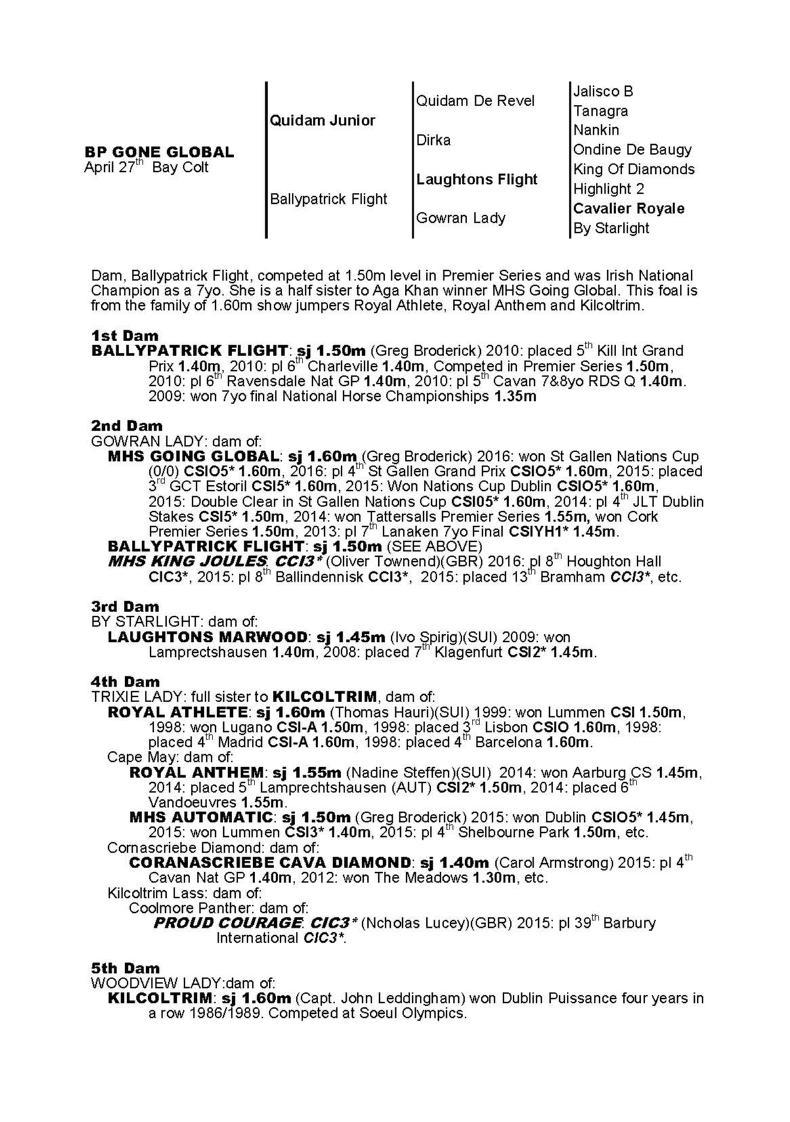PROFILING and benchmarking the Irish sport horse mare herd was one of the key recommendations of the Reaching New Heights report, a development strategy for the sport horse industry launched in March 2015. It is regarded as the first step on the road to genetic progress for the Irish sport horse.
Researcher Marcus O’Donnell is trying to bring the sport horse sector in line with the thoroughbred sector by blacktyping the entire Irish mare herd as well as trying to identify promising stallion lines.
Alarmingly it has emerged that there may be as few as just a handful of the very best breeding mares left in the entire country, with the vast majority either sold abroad or some even sent to slaughter by cash-strapped breeders during the recession.
Meanwhile the estimated pool of mares of high genetic value (HGV) only numbers a couple of hundred animals nationwide.
The Royal Dublin Society has funded and aided O’Donnell in profiling the Irish mare herd and in identifying the best mares available for breeding. O’Donnell will also be releasing three books as part of the strategy containing the best traditional Irish mares, the best modern Irish mares and the best eventing-bred mares.
BLACKTYPE
“Once a horse has competed at 1.30m level in show jumping it becomes blacktype. When a horse has competed at 1.40m level or higher, it goes in as capital blacktype, the same as a group winner on the track,” explained O’Donnell. BP Gone Global’s pedigree (accompanying this article) is an excellent example.
“For eventing, the horses go in italics, similar to National Hunt in racing. Eventers obtain blacktype when they complete a two-star event and reach capital blacktype when they complete a three-star event or higher.
“My service is commercial. I supply pedigree information for the Elite Foal Sales at Cavan, Goresbridge and Millstreet. I supply pedigrees for these foals in blacktype format similar to the sales pages that people would be familiar with in a thoroughbred catalogue.”
Blacktype pedigree of BP Gone Global

CATALOGUE
Since this format has been in use at the foal sales, the average price of foals has increased by as much as 300%.
“The first year it was employed we saw the half brother to MHS Going Global sell for €15,000 in Millstreet. Last year, six foals sold for more than €15,000 at the Elite Sales. This included a Cornet Obolensky embryo out of Ard Ginger Pop, which made €50,000 at the Goresbridge Supreme Sale of Show jumpers.
“Having a full pedigree for a foal gives added value at the sale as the buyer has more confidence in their purchase. Three years ago it was all about the sire, nowadays it is much more about the dam family.
“To get into an elite sale now the mare must have been from a top family, ideally a mare that has jumped to a good level in competition and obtained blacktype status herself. Having a mare that has already bred a horse that has reached blacktype gives you a competitive edge at the sale.
BUYER BEWARE
“At the Elite Sales, the pedigrees for the foals are researched independently by me and the vendor is not required to provide pedigree information. Often the vendor is not aware of what their mare is related to and the service I provide ensures that all the necessary information is included.
“At sales where the vendor supplies the information to the sales company it is important to research the pedigree of the animal yourself carefully before purchasing.
“This situation is not ideal as not all sellers will be able to research the information online and in some cases, information that is on an online database is misleading or simply incorrect. I try my best to double check everything and supply multiple results for each horse including the name of the rider that competed the horse at its highest level.”
RESEARCH TRENDS
“I am increasingly seeing a bell curve trend in show jumping families through my research. So, for example, a horse that is produced to 1.30m in Ireland may be sold to a professional rider in Italy who might jump it to 1.40m, then the horse could be sold to a junior rider in another country jumping at 1.30m level. It is important to find the results in Italy for the horses where it obtained its maximum competition level.
“Often the horse’s maximum competition level will be in national classes because when a rider takes a horse to an international show, they will drop the horse down a level - this gives them a better chance of winning prize money.
“For this reason the FEI database would be only an indicator for me and I would really need to see the national results for the horse as they would most often have jumped higher at national level.”
By the end of 2018, it is intended that a comprehensive up-to-date database on Irish horses with all the information on the current mare herd and their relatives should be understood by and available to breeders.